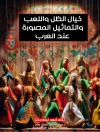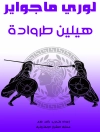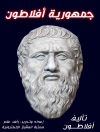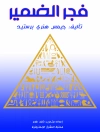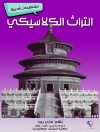This volume explores violence in bioarchaeological case studies from various cultures, geographic regions, and time periods throughout the Eastern Hemisphere through the lens of Neil Whitehead’s concept of poetics. It emphasizes the role and power of performance and ritual in violent acts, and how different types of violence are used within societies. Whitehead’s poetics of violence model has primarily been applied to Western Hemisphere assemblages and indigenous groups, and this is the first volume dedicated to the application of this theoretical model to Europe, Asia, and Africa.
Developed from a symposium organized at the American Association of Physical Anthropologists annual meeting in 2018, this volume keeps a tight focus on the direct link between physical evidence for violence in human remains and the contextualized interpretations of how that violence may have functioned within an individual’s society. This type of theoretical interpretation, which treats violence as ameaningful act firmly embedded within its cultural context, rather than as an aberration, is rarely applied to archaeological assemblages and human remains from the Eastern Hemisphere. This is the first volume to offer direct physical evidence for how violence was enacted and understood within different societies in the past. This volume aims to make these rigorous theoretical studies available to students and professionals in archaeology, anthropology, and bioarchaeology, and to provide a model for other researchers to interpret evidence of violence in human remains from archaeological contexts.
Cuprins
Chapter 1. Introduction (Osterholtz and Campbell).- Part 1. Asia.- Chapter 2. Performative violence and power: Human sacrifice as a mechanism to establish group identity and social organization in early Bronze Age China (Dittmar et al).- Chapter 3. Trade and Trauma along the Silk Road, the evidence from the western frontier of China and Mongolia (700 BC-420 AD) (Lee and Cuba).- Chapter 4. Postmortem Cranial Impalement During the Middle Yayoi Period, North Kyushu, Japan (Padgett).- Chapter 5. Investigating the risk of violence during the Neolithic to the Late Iron Age in Northeast Thailand (c. 1400 B.C. – A.D. 800) (Pedersen and Domett).- Part 2. Africa.- Chapter 6. The Poetics of Human Sacrifice in Ancient Egypt (Campbell).- Part 3. Europe and Great Britain.- Chapter 7. The Poetics of Massacre in Copper Age Croatia: integrative analysis of the mass grave at Potočani (Novak et al).- Chapter 8. The Poetics of Violence at Phaleron (Buikstra et al).- Chapter 9. The Poetics of Power and Violence in Roman Iron Age Denmark (Collier).- Chapter 10. Assaults and abuse in Roman Britain: the poetics of violence experienced by women from the 1st to early 5th centuries CE (Redfern). Chapter 11. The poetics of violence in post-Medieval England: Identification of gendered performative violence in the past (Zuckerman et al).- Chapter 12. Conclusion (Campbell and Osterholtz)
Despre autor
Roselyn A. Campbell received her Ph D in Archaeology from the Cotsen Institute at UCLA. She has conducted archaeological and bioarchaeological fieldwork in Egypt, Peru, Spain, Ethiopia, the U.K., and the western United States. Her research encompasses anthropological approaches to violence and trauma in the past, the history and evolution of cancer in hominin remains, ancient Egyptian archaeology and funerary practices, health and disease in the past, and portrayals of archaeology in popular culture. She is currently a Visiting Assistant Professor in Biological Anthropology at the University of California, Riverside, as well as the Assistant Director of the UCLA Luskin Center for History and Policy and the co-founder and Executive Director of the Paleo-oncology Research Organization.
Anna J. Osterholtz received her Ph D from the University of Nevada, Las Vegas. She has excavated and analyzed skeletal remains from Europe (Croatia, Romania, and Cyprus), the Near East (the UAE, Jordan, and Israel), and the Americas (Mexico, Belize, and the US), focusing on the social role of violent performance and mortuary processing in identity formation and negotiation. She is also a specialist in the analysis of commingled and fragmentary bone assemblages. She is currently an Assistant Professor of Biological Anthropology in the Department of Anthropology and Middle Eastern Cultures at Mississippi State University.


